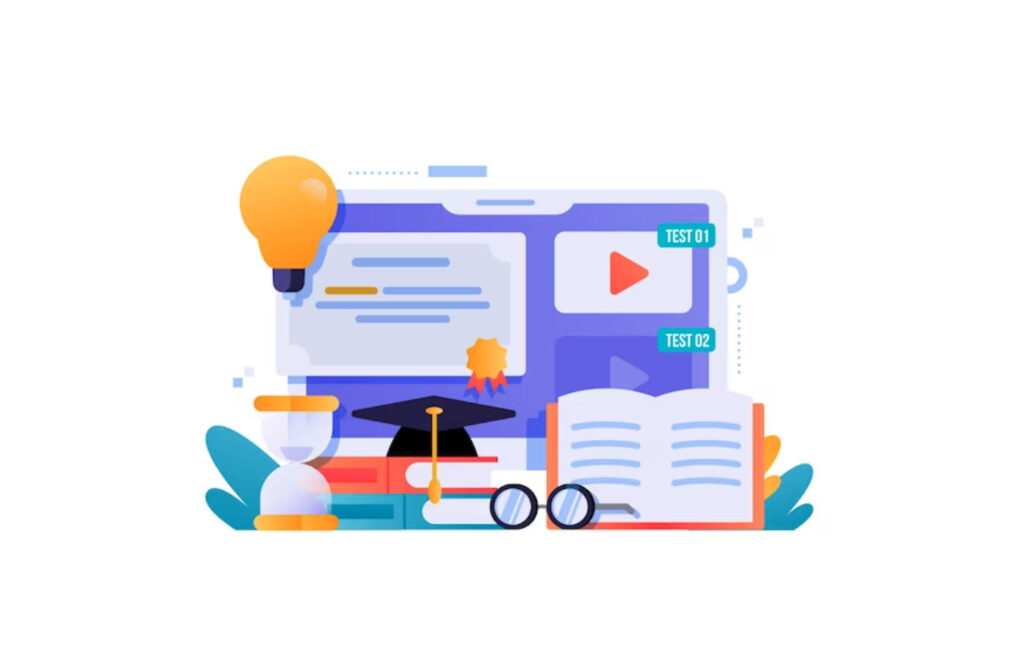Whether you’re an educator, a content creator, or a marketer in the education industry, this guide will provide you with valuable insights to reach and connect with your audience in meaningful ways. From understanding the needs of modern learners to creating compelling and relevant content, we’ve got you covered every step of the way. Let’s explore the exciting world of content marketing in education together!
Understanding the Audience
When delving into content marketing for education, it’s crucial to recognize the diverse range of students and lifelong learners. This involves understanding the varying educational backgrounds, interests, and learning styles of each individual. Tailoring the content to specific student demographics can significantly enhance engagement and relevance. By taking the time to truly understand the audience, educators can create content that resonates with students on a deeper level, ultimately fostering a more meaningful and effective learning experience.
Identifying Student Demographics
Identifying student demographics involves gathering data on factors such as age, location, educational background, and interests. Understanding the demographics helps in creating targeted content that addresses the specific needs of different student groups. Demographic insights enable educators to personalize content and make it more relatable to students from various backgrounds. By identifying student demographics, educators can adapt content to meet the diverse needs of their audience. This tailored approach can enhance engagement and relevance, ultimately fostering a more meaningful and effective learning experience for students and lifelong learners.
Analyzing Learning Preferences
Understanding how students prefer to consume and interact with educational content is essential in creating engaging materials. Whether it’s visual, auditory, or kinesthetic learning methods, discovering these preferences can guide educators in adapting content to increase student involvement and comprehension. By analyzing learning preferences, educators can tailor their strategies to better resonate with each individual learner, ultimately enhancing the overall learning experience.
Creating Compelling Content
Understanding your audience’s needs and interests is fundamental to creating tailored educational content. By utilizing storytelling techniques, you can make the material more engaging and relatable, capturing the attention of students and lifelong learners. Incorporating multimedia elements, such as videos, infographics, and interactive quizzes, can further enhance the learning experience by catering to diverse learning styles. It’s essential to regularly update and refresh the content to ensure it remains relevant and valuable, keeping the audience engaged and eager to continue learning.
Developing Educational Resources
Researching trending topics in education is key to creating timely and relevant resources for students and lifelong learners. By collaborating with educators and subject matter experts, you can ensure the accuracy and depth of the educational resources, making them more comprehensive and applicable. Providing practical examples, case studies, and real-life applications can further enhance the educational resources, increasing their relevance and engaging the audience. Additionally, offering various formats such as eBooks, podcasts, and study guides can cater to different learning preferences, ensuring that the content resonates with a diverse range of students.
Utilizing Interactive Media
Experimenting with gamification elements can add a fun and interactive dimension to the learning process, making it more enjoyable and engaging for students. Integrating virtual reality (VR) or augmented reality (AR) experiences can provide immersive and innovative learning opportunities, allowing students to explore subjects in a more interactive and memorable way. By encouraging user-generated content through forums, discussions, and project collaborations, a community-driven approach to learning can be fostered, creating a sense of collaboration and shared knowledge among students. It’s crucial to optimize interactive media for seamless accessibility across multiple devices and platforms, ensuring that the educational content reaches and resonates with a broader audience of students and lifelong learners.
Optimizing Distribution Channels
Utilizing data analytics is essential to identify the most effective distribution channels for educational content. Tailoring the content to suit the preferences and behaviors of different target audiences across these channels is crucial for maximum engagement. Implementing SEO strategies further ensures that the educational content is easily discoverable across distribution platforms. Regularly analyzing and optimizing the performance of each distribution channel is necessary to maximize reach and engagement, ultimately fostering a more meaningful and effective learning experience for students and lifelong learners.
Implementing Social Media Strategies
When creating educational content for social media, it’s essential to make it engaging and interactive to capture the attention of students and lifelong learners. By leveraging storytelling techniques, educators can make the material more compelling and shareable, increasing its impact on social media platforms. Additionally, incorporating user-generated content and student testimonials can foster a sense of community and trust, enhancing the overall learning experience. Employing targeted advertising further enables educators to reach specific demographics, ensuring that the content resonates with various student groups on social media.
Utilizing Email Marketing
When crafting educational email campaigns, it’s crucial to tailor the content to the specific interests and learning preferences of the recipients. By segmenting email lists based on academic pursuits or areas of interest, personalized educational resources and updates can be delivered directly to students’ inboxes. Implementing A/B testing can further optimize engagement by refining subject lines, content formats, and calls-to-action. Additionally, strategic email marketing should provide clear pathways for recipients to explore additional resources or enroll in relevant courses, ensuring a seamless and valuable experience for lifelong learners.
Measuring Success and Adaptation
Measuring success in content marketing for education involves tracking key metrics such as engagement, click-through rates, and conversions to evaluate the impact of the content on students and lifelong learners. Adaptation is crucial in content marketing for education as it involves adjusting strategies based on the performance of the content, feedback from students, and changes in educational trends to ensure continued relevance and effectiveness. Understanding the success of educational content requires analyzing data from various sources including social media platforms, website analytics, and student feedback to gain comprehensive insights into its impact and effectiveness. To adapt content effectively, it’s important to conduct regular assessments of student preferences, learning styles, and feedback to tailor the educational material to their evolving needs. This ensures that the content remains valuable and engaging for the audience, resulting in a more impactful learning experience.
Tracking Engagement Metrics
When tracking engagement metrics for educational content, it’s crucial to monitor indicators such as time spent on page, shares on social media, comments, and interactions to gauge its resonance with students. These engagement metrics provide valuable insights into how well educational content captures the interest of students and lifelong learners, helping marketers refine strategies for better results. By tracking engagement metrics over time, educators can identify patterns in student behavior and preferences, allowing them to optimize future content creation efforts for maximum impact. Additionally, monitoring engagement metrics enables educators to make data-driven decisions about the type of content that resonates best with students while also identifying areas that require improvement or adjustment. This data-driven approach ultimately fosters a more meaningful and effective learning experience for students and lifelong learners.
Adapting Content Based on Feedback
Adapting educational content based on student feedback involves actively listening to their suggestions, concerns, and preferences to make meaningful adjustments that enhance their learning experience. By collecting feedback through surveys, polls, or direct communication with students, educators can gain valuable insights that inform necessary adaptations to educational materials for improved relevance and effectiveness. Effective adaptation based on feedback requires a collaborative approach involving educators working closely with students to co-create content that meets their specific needs and aligns with their learning objectives. Continuous adaptation based on constructive feedback fosters a dynamic learning environment where educational materials evolve alongside the changing needs and expectations of students.
Conclusion
In conclusion, understanding the audience is the foundation of successful content marketing for education. Identifying student demographics and analyzing learning preferences provide valuable insights that inform the creation of compelling educational resources and interactive media. Optimizing distribution channels, such as implementing social media strategies and utilizing email marketing, enhances the reach and engagement of educational content, fostering a sense of community and trust among students and lifelong learners.
Measuring success and adaptation are essential components of effective content marketing for education. Tracking engagement metrics, including time spent on page, social media shares, and interactions, provides valuable feedback for refining content strategies. Adapting educational materials based on student feedback ensures continuous relevance and effectiveness, creating a dynamic learning environment that meets the evolving needs of students and lifelong learners.By incorporating these strategies and leveraging data-driven insights, educators can create and adapt content that resonates with their audience, ultimately enhancing the overall learning experience and fostering meaningful engagement with educational material.


